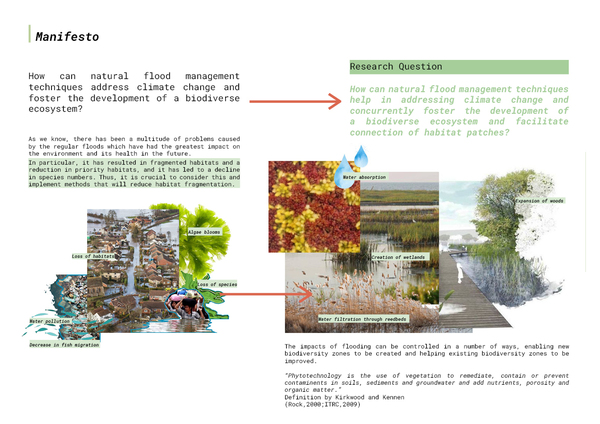There have been multitude of problems caused by the
regular flooding in Cumbria in the past, which have had a
major impact on the environment and its health for years to
come. In particular, it has resulted in fragmented habitats and
a reduction in priority habitats, and it has led to a decline in
species numbers. Consequently, it is vital to take this into
consideration and implement techniques that will help reduce
habitat fragmentation in the future.
Through a series of design decisions, the project seeks to
address the question of “How can natural flood management
techniques help in addressing climate change while
simultaneously contributing to the development of a biodiverse
ecosystem and facilitating the connection of habitat patches?”.
The project explores the natural flood management techniques
such as creation of retention basin to handle excess rainfall, slow
movement of water, woodland creation, wetland management,
Rain gardens and Sustainable Urban Drainage and how they
may be effectively employed to create biodiversity, expand
the green corridor and connect habitat patches, both of which
will contribute to improved water quality along River Ehen in
Cleator, Cumbria. The design process is guided by a number
of core principles relating to sustainability and biodiversity.
These include flood-adaptive design, species richness, slow
mobility, and the establishment of ecological corridors.


